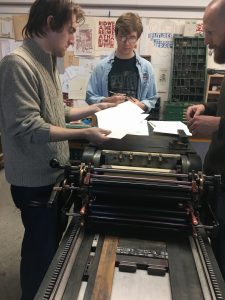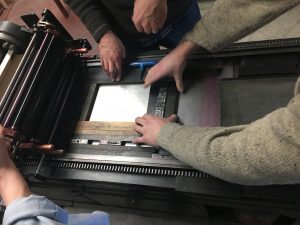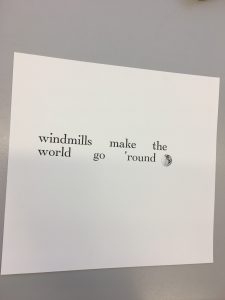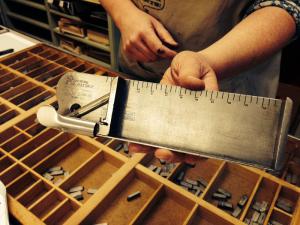Confession: my favorite type of shopping is stationary shopping. I am obsessed with Rifle Paper Co., Papyrus and PaperSource. I just love paper and print! However, even though I am a frequent visitor of these stores, I very rarely buy anything because of the prices.
$12 for a Valentine’s Day card! That’s crazy.
But after spending two days at the letterpress, I now understand why. These prints are work! I guess it never registered to me that all the pretty cards that are displayed on the walls of my favorite stationary stores were hand printed, not digital. Those cards don’t just roll through a printer in hundred; they must be wheeled through a press one by one.
Another confession: over winter break, I applied to multiple printing presses – Steel Petal Press, The Found, Printventory, Snow and Graham… all those expensive cards (but also the ones that look the prettiest!) Now I feel silly for applying because I really didn’t understand all the labor that goes into their products. I really thought it was more about the art and the words. Then run it through a computer and then BAM product ready to sell. But no, this is more art than corporate. I now realize I’m probably not qualified for these companies because of my modest art background but hey, now that I have a little bit of experience with a printing press, maybe I’ll be a little bit more desirable.





